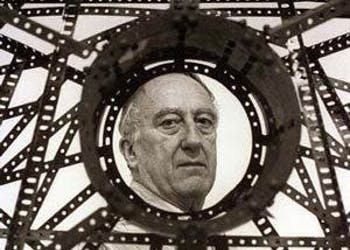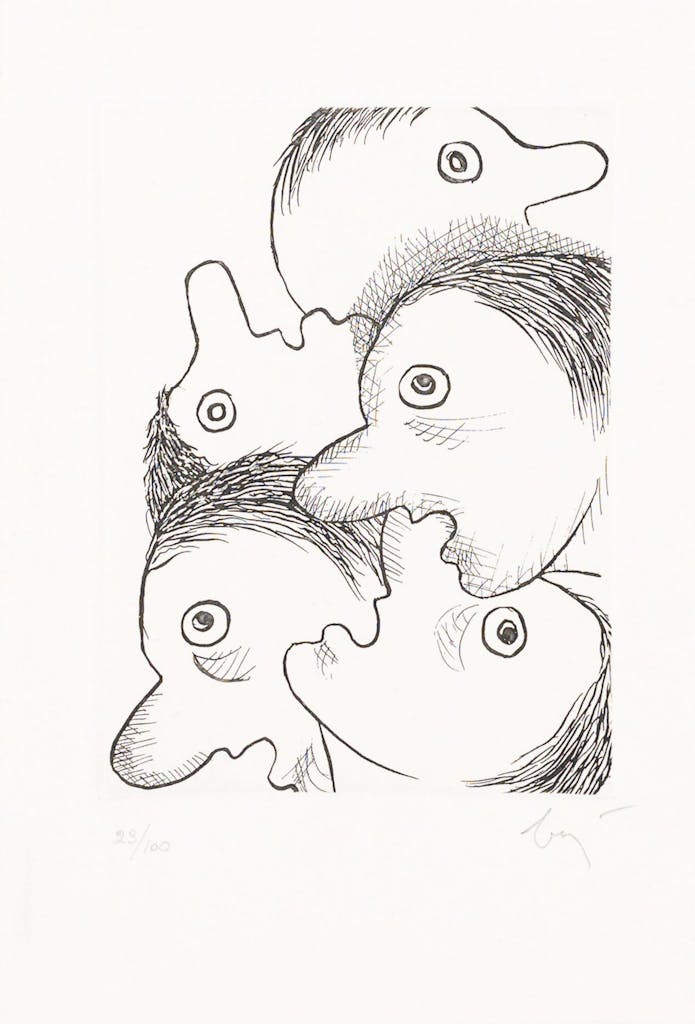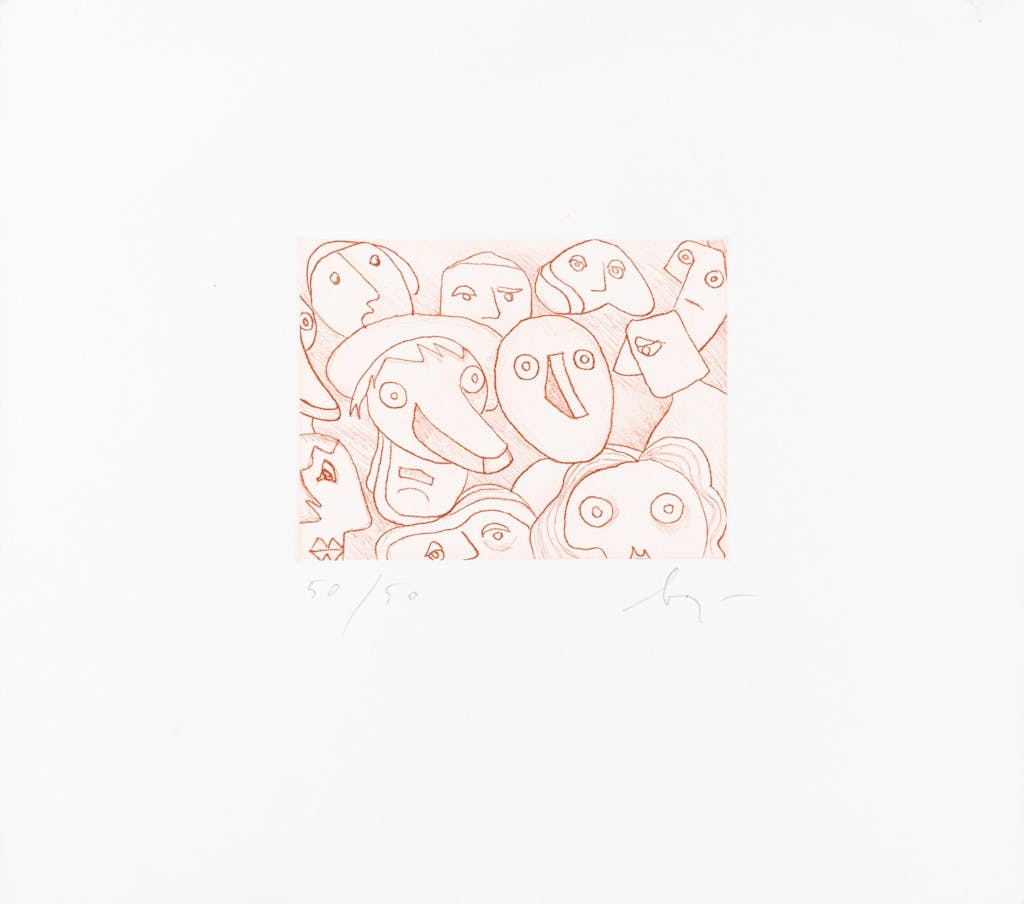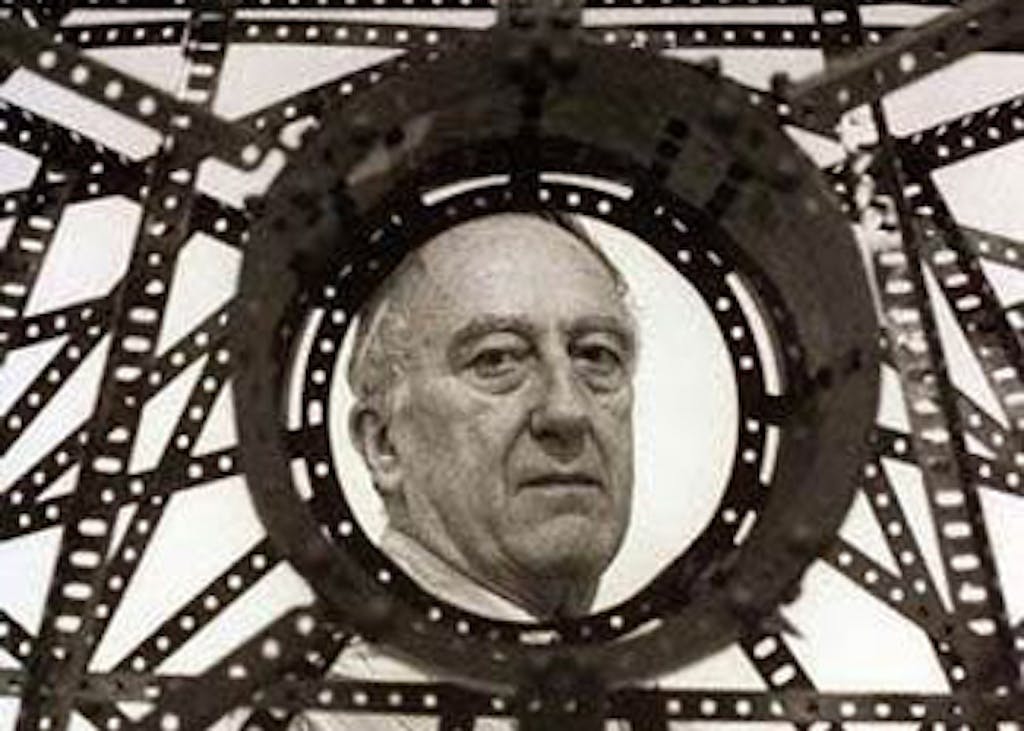“Anarchism is the best launching pad for creative implosion. ”
Enrico Baj, born in Milan on October 31, 1924 and died in Vergiate on June 16, 2003, was an Italian painter, anarcho-pataphysician libertarian.
In 1951, with the painter Sergio Dangelo, he founded the Nuclear Movement, considered to be the Italian equivalent of the CoBrA movement.
In 1953, he founded with the painter Asger Jorn the “International Movement for an Imaginative Bauhaus” and organized the International Ceramic Meetings of Albisola, in which the painters Matta and Roland Giguère participated.
From 1955, he composed his paintings with the most heterogeneous elements like pieces of glass, skeins of wool, mattress cloth, watch dials. That same year, with the writer Édouard Jaguer, he created the Italian review Il gesto.
After meeting Mesens in London, Marcel Duchamp and Arturo Schwarz in New York, he met André Breton in Paris (1962).
From 1965, he began a series of collages representing grotesque figures of ladies and generals in ceremonial costume overloaded with decorations to mock bourgeois conventions and political and social misunderstandings.
Baj will find its own language around 1957 with its first assemblies not intended to coexist, materials as diverse as possible (medals, labels, watch faces, etc.) will find themselves out of context and place pictorial intervention in the foreground.
Baj is a free man and it is first of freedom that he intends to maintain us in his painting and his engravings. A freedom-loving man in the most libertarian sense, Baj expresses his horror of all forms of oppression with this immense painting-collage “The funeral of the anarchist Pinelli” produced in 1970. In the midst of demonstrators and ubiquitous soldiers barded of decorations, the figures of the anarchist Pinelli, his wife and his daughter are the signs of a violent protest against injustice. Fresco inspired by Picasso’s Guernica, which was banned from exhibition for a long time.
For Baj, the engine of his inspiration was neither greed nor fake glory, but rather “the libertarian spirit always present in the artist’s initial impulses. Why are we engaging in this activity? For freedom of invention, creative imagination, adherence to its time.”
He greatly helped the anarchist movement in Italy and elsewhere. He donated works to the International Center for Research on Anarchism in Lausanne. Their sale to galleries has enabled the financing of several projects.
Enrico Baj also showed a strong interest in literature. He illustrated many books and was himself an author.
Since his participation in the Venice Biennale in 1964, many European museums have dedicated exhibitions to his work.




